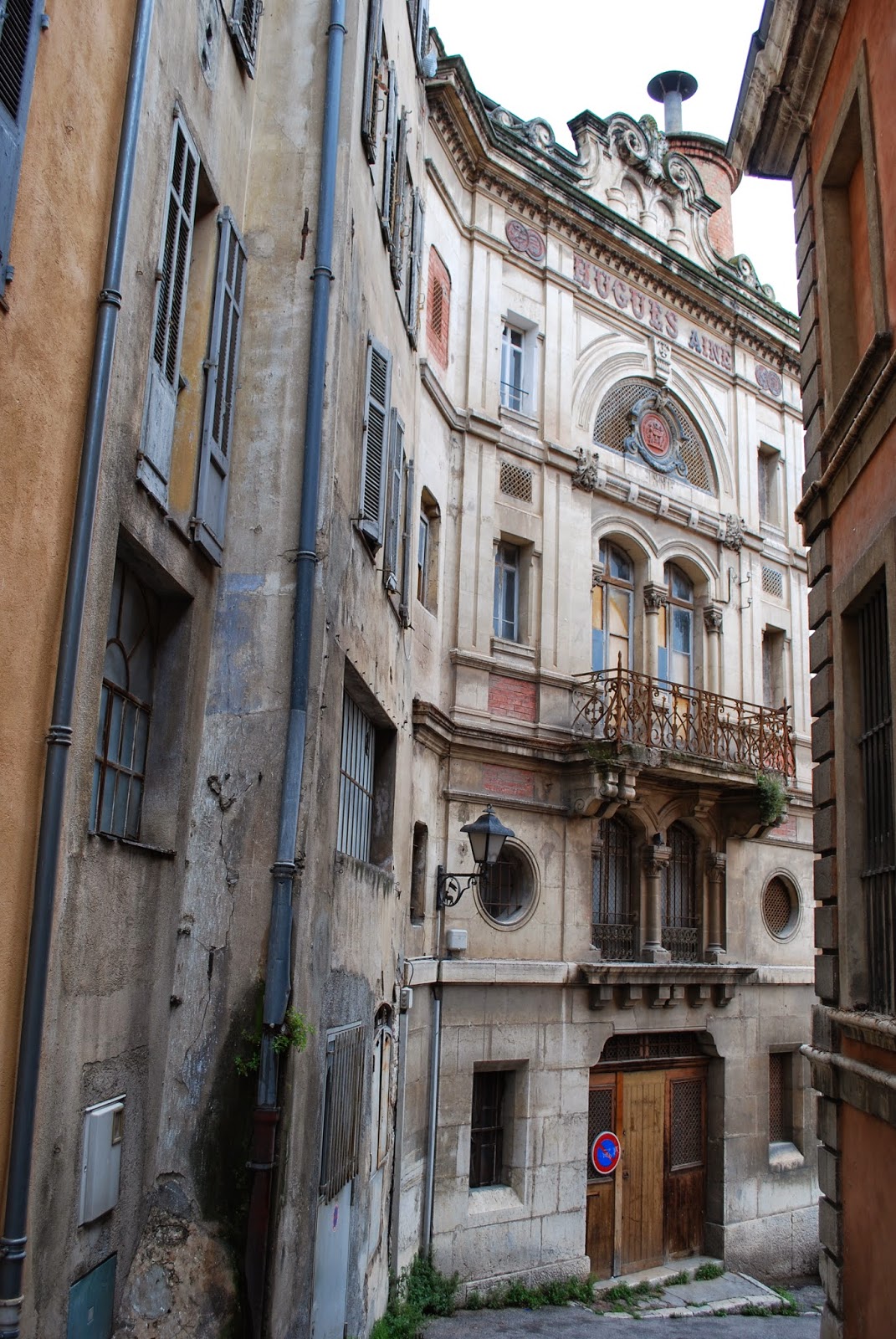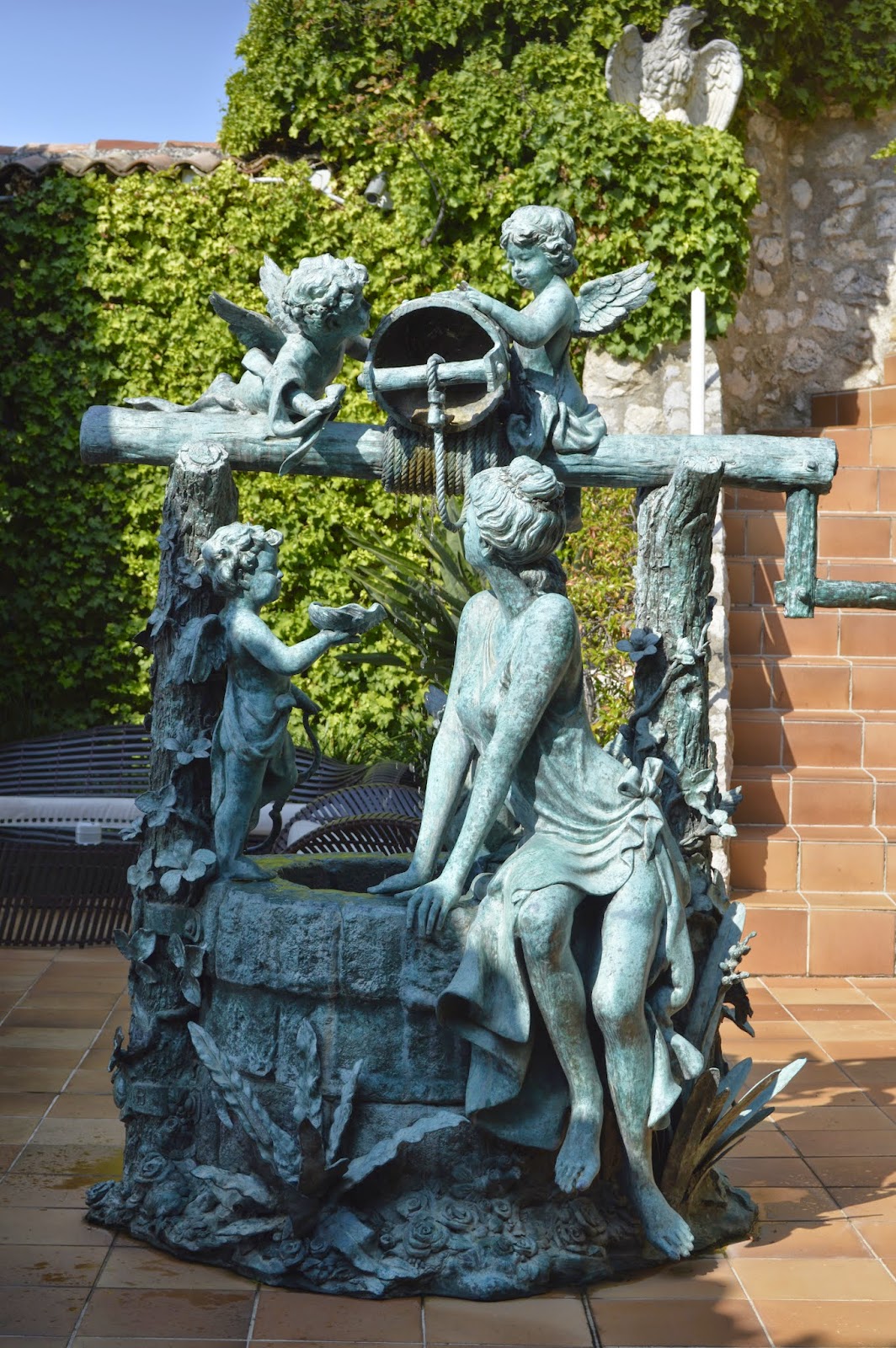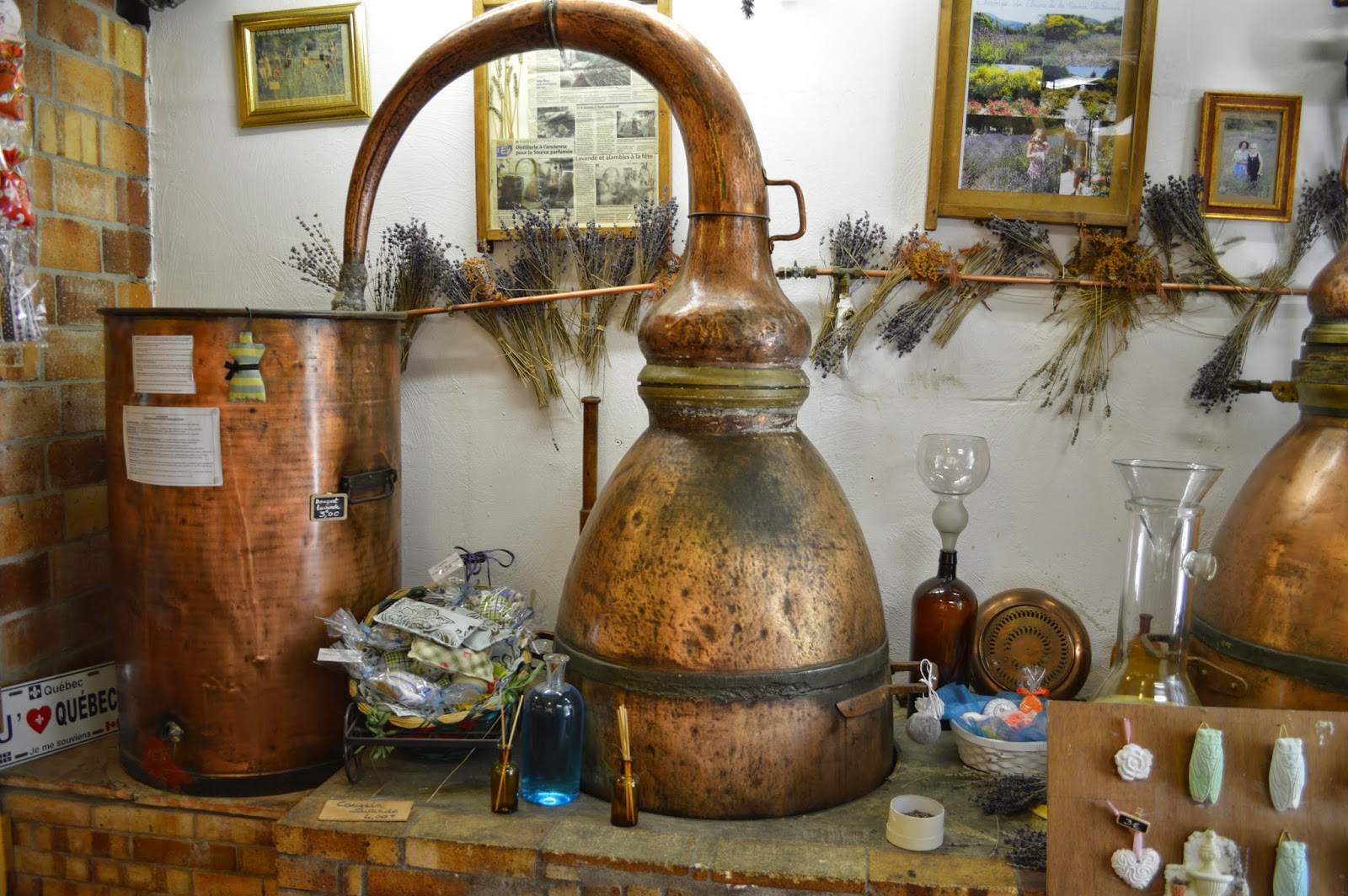
We were on our way to visit
Grasse, but first a quick trip up Mount Boron to see the coastline view of Nice and the French Riviera. Yes, nice, oh and by the way, just along from us was Elton John's estate, the only house on that part of the hill. Since he bought the area has been made a reserve, no building near him in future. We headed inland.
Grasse is still the perfume capital of the world, even if many of the raw materials for perfumes are no longer sourced from Grasse. Perched inland from Nice, Grasse enjoys a pleasant climate, beautiful hilly countryside, good quality water, easy access to the busier parts of the cote d'azur, and lots of tourists.

In the Middle Ages Grasse specialised in leather tanning. There are numerous old 'parfumeries' in Grasse, such as Galimard, Molinard, and Fragonard, each with tours and a museum. We visited the Fragonard one. I'd done this before but this time I was part of a set tour group and the perfume guide gave better information, and service in the shop. We learnt where the raw materials for products come from, how the essential oils from flowers are captured and preserved, how bottles are packaged, the 'noses' who design new perfumes from their 'perfume organs', and the importance of using light-blocking containers for perfumes.


Perfumes are more concentrated than eau de parfum, which in turn is much more concentrated than eau de toilette. Men need less scent on them than women. With women it wears off faster because their skin is thinner. Naturally we were encouraged, by special deals, to buy perfume, soaps and other products.

There was no time to explore Grasse on the tour. Our guide didn't seem to think it was worth it but I disagree. Four years ago in a thunderstorm I had enjoyed seeing the narrow streets, a museum, meeting a real 'nose'. Instead we had to be content with just the factory tour.
The next day we visited the perched village of
Eze and another perfume factory tour was planned there too. I skipped that and wandered the village instead. It wasn't my first trip to Eze either. The first time four years ago was to find the location featured in the film
The Bucket List. I'd found it and for an hour played life-styles of the rich and famous at the terrace restaurant at
le Chevre d'Or.

They say you 'can't go back'. Well, that's true. I felt the quality of the restaurant, from a visual perspective, had dumbed down and was certainly less luxurious. There were no waiting staff in snappy black and white uniforms. The umbrellas were a conventional beige. It all seemed very beige all round. Only the view of the Mediterranean was as spectacular as before.
These days I can't believe I paid 50€ there four years ago for a glass of rose champagne (yes, just one glass of champagne from Provence), and that meal (don't ask the price for a tiny dessert and a goat cheese salad) was very ordinary, only the surroundings and staff were truly
luxe.
I wandered the quaint alleyways of this town on the
Route de Napoleon but somehow there just seemed less this time. There was less variety in the shops and
ateliers. There was still good quality but the variety was reduced and so was the number of little shops open. Fragonard was born here, Edith Piaf died here.

Disappointed, I stopped to inspect the little salt and spices market just outside the town walls. They were still setting it up and as I tried to read the little labels I was invited to take a scoop and snip the products. Well, OK, so I did.
Two men running the market came over to chat. They were very pleasant and extremely generous. Suddenly they were offering me food, part of their own morning tea they'd made, hot off the pan. They explained it was a Nicois specialty- a bit like a pancake but much thinner and lighter, but more fluffy than a crepe. There's no flour in them, I was informed, heh? No they weren't an omelette either. I was intrigued but couldn't work out what they were saying clearly so I never discovered the secret. It was tasty, interesting and they told me it is never filled or topped with anything else. It's eaten solo.
 Saint Paul de Vence
Saint Paul de Vence is known for its art. Artist Marc Chagalle worked and died here. It's an elegant chic place full of classy art shops (prints too) and galleries, ceramics, some homewares and clothing. Pop around a corner and you may find a statue, a fountain or a panoramic view. There is a special garden at the top but you have to pay at lease 7€ each to get in. I think that's a bit steep to look at a few plants outside so I didn't bother.

Like all these perched villages, you get to give your legs and bum a good workout going up and down all the stairs as there are no roads as such inside the stone walls.

These shops are very expensive, very. There are tourists everywhere, but there's not a lot to actually do in this town. If we'd had a private car we could have gone to
Vence 3 km up the road, which is also beautiful, more relaxed, has more realistic shops and art galleries, and fine terrace cafés.

We saw
Tourettes-sur-Loup in the distance, another 3 km west of
Vence, small and picturesque like St. Paul, but
with far fewer tourists, and the artisanal shops there are run by the
artists themselves. Unfortunately it was not on our guided list. All I saw happening in
Saint-Paul-de-Vence were some policemen struggling with directing traffic outside the town walls, and some men playing petanque. Not exactly rivetting.
 Gourdon
Gourdon, on the other hand, is small and charming. It seems better able to cater for your average tourist to this area in terms of affordability. You can dine at a cafe or you can munch a freshly made sandwich on the cheap. Tourists are spending less on food and smart little businesses know that tour groups don't always have time for a sit-down menu or the money for extras like meals. They cater for tourists like me eating on the run and seemed to be doing a good trade. This is another arty town which seems to like crafting things from glass and crystal. This includes jewellery, glassware, home fittings like chandeliers. Prices range for all pockets but competition means the shops all sell at virtually the same price.

Also to be found are pottery items, soaps and perfumed products. They prefer that you don't take photos inside their shops, so it's wise to ask first. I was allowed to take a photo of an old alambric for distilling essential oils.
Some of the venetian-style glasses were beautiful but I told myself I already have four from Venice so I don't need more - who pops in and dines with me anyway? I plumped instead for some cut glass earrings that changed colour with their surroundings. All these villages are worth a visit but some more so than others - hence this lengthy post. I hope you find this helpful.








2 comments:
Pretty pictures, Frances.
Thhanks for writing this
Post a Comment
I welcome your comments, contributions and feedback.